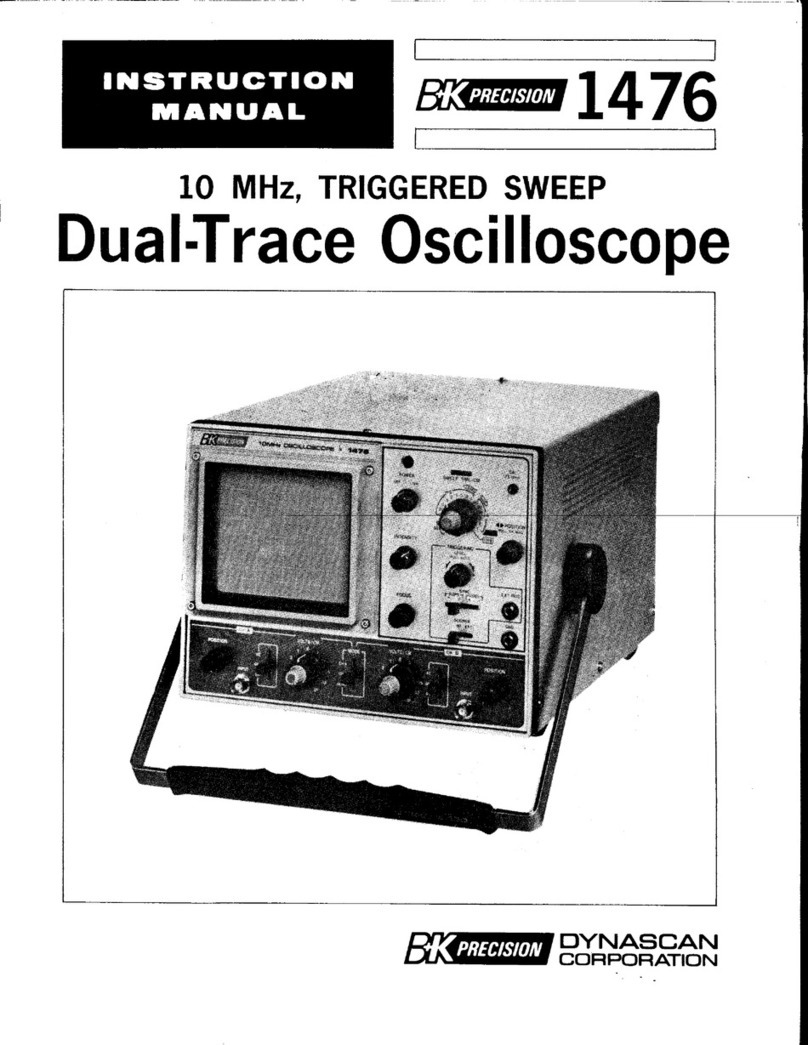
FEATURES
c
FEATURES OF SINGLE-TRACE
AND DUAI-TRACE MODELS
CRT FEATURES
Rectangula! CRT with large 8 x 10 centi-
mete! viewing alea. High blighttess, Z kV
accelelation voltage. Internal 8 x 10 divi-
sion glaticule elihinates pa-lallax euor.
Trace lotation electrically adjustable flol!
front panel.
10 MHz BANDWIDTH/3s ns RISE TIME
Conselvatieely rated -3 dB bandwidth is dc
to 10 MHz. Tliggeling beyond 10 MHz.
HIGH SENSITIVTIY
width. Selectable I ov/die sensitivity to
7 MHz, Pellrlits the low capacitance, high
iEpedance 10:1 probe to be used fo! neally
all DeasuleDents, thus assuring minimuD
ci!cuit loading.
CALIBRATED TlME MEASUREMENTS
Acculate tiroe (pe!iod) measuleroents (j3%)
on 19 caliblated ranges from 0.5 s/div to
0.5 tb/div, plovides evely sweep rate needed
fo! viewing wavefolms from dc to 10 M}Iz.
Sweep ti[|e fully adjustable between cali-
b!ated !anges.
X1OSWEEPMAGNII"ICATION
AUows closel examination of waveforms,
increases baximurr sweep rate to 50 ns/div.
CALIBRATED VOLTAGE MEASUREMENTS
Acculate voltage measueDents {J370)
otr
12 calibrated langes Irot! 1 rnv/div to 5 V/
div. Vertical gain fully adjustable betpeen
calibrated !anges.
AUTO SWEEP
Selectable AUTO sweep plovides sweep
witlout tligger input, automatically levetts
to tliggered sweep operation when adequate
trigger is applied.
1TRSATILE TRIGGERING
Selectable INTernaI, LINE (50/60 Hz), or
ExTernal tliggelirg. Fully variable trigger
LE\EL control.
VIDEO SYNC
Selectable FRAME o! LINE tliggering for
observing composite video wavefolms.
X-Y OPERATION
Extelnal trigge! input (channel 2 on dual-
trace Inodel) can be applied as holizontal
(X-axis) deflectior while the vertical input
(charnel 1on dual-tlace model) plovides
vertical deflection (Y-axis).
Z AXIS INPUT
Intensity modulation capability. Tlace
blightens with positive sigrali TTL com-
patible.
BUILT-IN PROBE ADJUST SQUARE WAVE
A 0,5 V p-p, 1 kHz square wave generator
pelrDits probe compersation ailjustment.
ADDITIONAL FEATURES OF
DUAL.TRACE MODEL
DUAL TRACE
Two identical veltical input cha]nlels pe!-
rnit sihultaneous viewing of two wave-
forms. Alternate or chop sweep selectable
at all sweep rates,
SUM AND DIFFERENCE CAPABILITY
Permits algebraic addition or subtraction of
chanDel 1 alld channel 2 waveforms, dis-
played as a single trace. Useful fo! diffeF
ential voltage and distoltion measurements.
EXPANDED INTERNAL TRIGGERING
Selectable CH 1. CH Z. or V. MODE source.
Ir V. MODE, each wavefolm displayed
becomes its own trigger (alteltrate triggeF
ing in ALT dual-sweep mode).




























